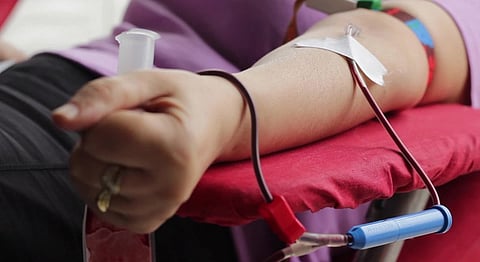
- HOMEGROWN WORLD
- #HGCREATORS
- #HGEXPLORE
- #HGVOICES
- #HGSHOP
- CAREERS
- ABOUT US
- CONTACT US

A person’s blood group defines their identity in a much more profound way than the obvious medical classifications. We are asked to provide strangers with our own from the moment we receive our first school identity card and this pattern continues right through our lives. Considering it may well save our lives in the case of a medical emergency, and sometimes ascertains the veracity of a person, very few hesitate to share this personal information either. But what does a person then do when their blood group is not deemed acceptable because it can only be found in one out of every 17,000 Indians? Or four in a million people as far as global statistics go? This is a question which has plagued Indians with the lesser known ‘Bombay Blood Group’ for 63 years.
Seth Gordhandas Sunderdas Medical College was one of the premier medical colleges in India when a curious case made its way to the institute. When a railway worker who was hurt in an accident was rushed to the hospital in 1951, the doctors were baffled with an odd problem in which the patients blood type could not be determined. The patient appeared to have the O blood type but it didn’t explain why his blood proved to be incompatible with the O type blood being tested for transfusion, every single time. The discovery of this new blood type puzzled doctors for whom the priority quickly became a search for another person with a compatible blood type. This resulted in an anomalous breakthrough, where another person with exactly this Bombay Blood being found within three months of the discovery, while no one can pin-point with complete accuracy why exactly a blood type which wasn’t discovered by anyone in the city for 30-40 years was suddenly being discovered in such quick succession. The search for another third patient was started immediately as the railway worker and the second patient, were found to be in need of a transfusion. The doctors Y.M. Bhende, C.K. Deshpande and H.M. Bhatia then went onto publish a note in the prestigious medical journal The Lancet about the two patients and the finding of an unknown blood type.
The third patient, called Z was found over the course of 8-10 months. This after the doctors had tried the blood of over 160 individuals looking for a similarly similarly rare blood type and thus it came to be informally known as the Bombay Blood Type, technically now known as ‘HH type of blood’. But the screenings continued as per what Dr Girish Vyas, who had joined GS Medical College as a young post graduate student in 1954, told podcast channel Audiomatic, as the subsequent tests at the college identified 11 more cases by 1956.
Today, there are close to 150 people registered with the Sankalp Foundation who have the Bombay Blood group, a fact which eludes most people. The blood consists of red blood cells, which interact with a fluid in the blood called plasma through markers. The markers on the blood are determined through a master type called H which generates the ABO blood group. A person with Bombay Blood Group is however found to be deficient in protein H while the blood masks itself as the O blood group.
The rarity which surrounds this blood group now serves as fictional plot points for Hindi and Telugu films as the cause for its high prevalence in India, over countries like US, where it’s as rare as one in a million, is attributed to inbreeding in the form of high rates of inter-caste and close community marriages such as those between cousins. This has ensured that the gene pool or ‘blood type’ is highly restricted as it is predicted that those with this blood type have common ancestral origins.
But the urgent need for those who live with this blood type is not tied in the discovery of their past as much as it is with insuring their future. The testing of the ‘hh’ blood type was prevalent only in the country’s bigestg hospitals with small district hospitals in rural areas only now equipping themselves for this test.
If a person is able to identify himself as the Bombay Blood type, he is often advised to take extra caution in how he/ she handles herself as any untoward injury which requires a blood transfer may prove to be an uphill task. Aside from this though, a 2012 WHO report had stated that India faces a blood shortage of 3 million units. The rarity of the blood means that it often takes organisations and blood banks months to locate an ideal match, sometimes even in different countries, and even those who are identified, refused to donate their blood.
If you haven’t already, we strongly urge you and your loved ones to get your blood tested especially if you are identified as ‘O’. You can find out more about the Bombay Blood group and the donation drives surrounding it at Think Foundation and Sankalp Foundation. We hope you take part in them as frequently, regardless of your blood type, which may be critical to saving somebody’s life.
If you enjoyed this article, we suggest you read:
